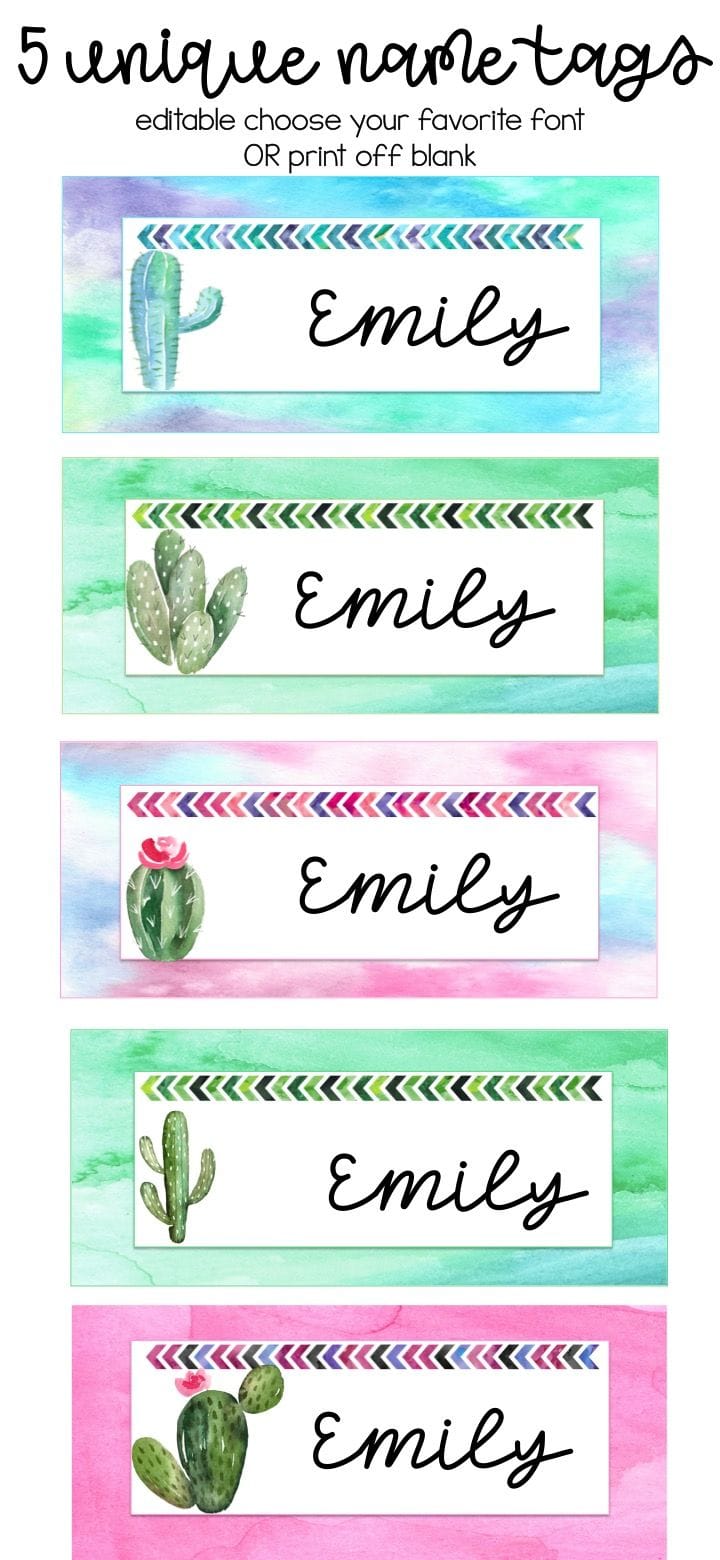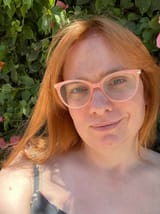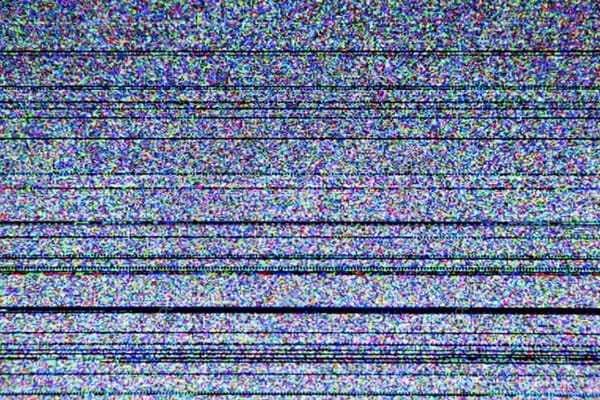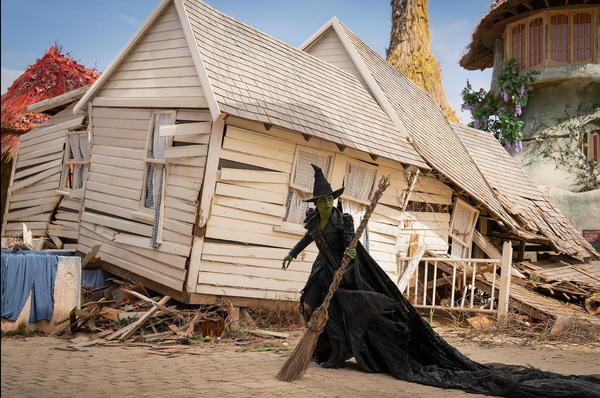How to choose a name
A trans person's choice of a name is more than just a new thing to be called. It's a choice of a history.

When I chose the name Emily, it was less like I picked it and more like it chose me. I first encountered it in a book when I was 6 or 7, and the little girl bearing that name — Emily Arrow, how cool is that? — was everything I wanted to be without me quite realizing that was who I thought I was, deep down. (I have written a lot more about this here.)
I tried other names out. I tried on Sophie — an instant no. I thought about Violet, which I thought was cute with my last name but which didn’t stick. I tried to find a name that started with T to preserve the initials TV. (Maybe I stopped being so invested in TV criticism because I changed my initials? RIP to my personal brand.) The name Olivia came closest to unseating Emily, because I thought Olivia VanDerWerff had a regality that appealed to me.
But none of them could unseat Emily. From the first, when I mentioned to a friend in my very first coming out email, “I am kinda sorta trying on the name Emily/Em for size. I haven't committed to it or anything, but I like to see how it feels,” it has been my name. I knew it, I knew it, I knew it, as much as I have ever known anything. It felt like it had always been my name; it felt awful that I had worn some other name for so very long.

When I published my coming out essay on Vox, I mentioned that the show I reviewed in that essay — The Handmaid’s Tale — had a character named Emily in it, and more than a few people took from that offhand mention that this character was who I was named after, which is unfortunate, since that character is ritualistically tortured and raped.
I hated that people said I had chosen my name because of the show because that argument wrongly intuited why I had transitioned. Many of the so-called “gender critical” folks, perhaps better known as TERFs, trans women are simply fetishizing the suffering of cis women, which is ridiculous. Trans women are subject to so much suffering with so much less societal and structural support, especially once we are out living our lives in the world. But that frustration was not the only reason the argument made me so mad.
No, the frustration mostly stemmed from how superficially it treated the choice of my name — as though it were a costume I was trying on. I’ve come to realize that the choice of the name Emily felt somewhat sacred to me, like a vocation that found me. To assume the mantle of Emily was to project both into the future and the past the person I would become and the person I had been. Emily just fit me in a way other names I had used never did.
A while back, I had the vaguely whimsical idea for a short story sort of in the vein of Hayao Miyazaki’s films, about a ghost city full of the names that trans people discarded, which were looking for someone new to attach themselves to. It came to mind from exiting the subway in New York and seeing an abandoned cardboard sign emblazoned with the dead name of one of my good trans girl friends. What if this was her name, I thought, looking out in the world for the trans masculine person whom it would better suit. But this idea felt, to me, closer to my experience of finding my name — as if some trans masc person who had once borne the name Emily sent it floating off into the sky one day so it could find me, the person who needed it.
It’s fascinating how often this happens. I have been chatting a bit with a newly out trans woman, who is going through the scary process of figuring out how to proceed with her transition in her 30s and what that will look like for her. She spent the longest on trying to pick a name, cycling through a whole bunch of them, none of which quite fit her, until one day, she was out taking a quarantine walk, and a name suddenly occurred to her, flitting into her brain. It felt like the way this goes, like a divine visitation of sorts.
I’m also thinking about this because I’m watching a lot of Netflix’s incredibly charming new Baby-sitters Club series, due in July, which adapts Ann M. Martin’s books for the modern era, while keeping many of their ‘90s trappings intact. (Yes, the girls in the Baby-sitters Club still use a landline phone for some reason.) The show is just lovely, and the friendships between the five main girls in the club are vividly realized, while still providing some “baby-sitting emergency of the week” shenanigans. But the more I watch it, the harder it is to not feel an intense melancholy.
To watch any show about young girls or young women is to feel, acutely, the loss of a girlhood I never got to have, because I kept trying to find some way to be “a boy” and appease everybody else who lived around me. I knew the ways I was supposed to behave, but doing so felt like falling further and further behind in some race I was desperate to win. I was a phantom.
I can remember loving to go to bookstores as a girl and seeing the many Baby-sitters Club titles and longing, so acutely, to pick one of them up and buy it. I don’t think anyone would have stopped me. My parents occasionally grew frustrated with my love of reading books about girls (my request, once, for a copy of Little Women was denied with a copy of Huckleberry Finn taking its place — a terrific book, but I wish I had read Little Women instead), but they were just happy to be raising a reader. No, what I knew was that if I were caught reading a Baby-sitters Club novel by my friends, they would have made fun of me. I knew the ways the world was gendered, and I knew the box I fit in. I also knew how poorly that box held me.
You might notice that I used the phrase “as a girl” in the preceding paragraph, something that might confuse you once you know I’m a trans woman who came out in her late 30s. And for a long time, especially when I was still publishing under my old name, I wasn’t sure how I could ever think of myself in the past as a woman, that my life had a demarcating line in it. Other trans people insisted that when their pasts were discussed, they should be discussed as though they had always lived as their true selves, no matter how odd this might make things seem. (An obvious example: Caitlyn Jenner was a gold medalist in the men’s decathlon at the Olympics, and if we’re going to talk about that, we should say “she medaled,” not anything else. But that sentence seems to bear both a contradiction and a subtle discloser of Jenner’s trans status that makes me uneasy but which is probably unavoidable given the nature of her fame.) I claimed to be okay with some sort of he/she split — the idea that you could refer to my past as some sort of man’s past, up until I came out in early 2018. It just seemed reasonable to me in a way I was eager to be as a public trans person.
But the further I get from coming out publicly, the more the notion of that split feels cumbersome and ridiculous to me. To live under the name Emily is to project backwards the kind of girl I was, who was smart and friendly and maybe a little standoffish and self-centered. She was the kind of girl who always had a project that she wanted to involve her friends in (even if they didn’t particularly want to be involved). And she was a girl who organized things and tried to create things where nothing had been before. I can sense her first bike ride, her first kiss, her first heartbreak, her first short story. I can remember all of those things because they actually happened to me. But I can also remember all of those things in some other shadow self, who was the person I should have been.
That imagination of a past self more or less describes my current self, too. Imagining the Emily who did read Baby-sitters Club books and who got that beloved copy of Little Women for Christmas is to take my current self and imagine her backwards in time. And picking the name Emily is also an attempt to state, for the world, the woman I am and the girl I never quite was. It is an expressed wish, when you meet me, that you will understand me. All names are placeholders for the person we hope others will see when they get to know us. Trans people understand that better than anyone.
In his terrific essay collection Something That May Shock and Discredit You, the trans masculine writer Daniel Lavery writes about long afternoons he spent with other teenage boys watching them play video games. Lavery was not out, even to himself, as a teenager, and yet the sensation of watching those boys play those games, which he thought at the time was tinged with some sort of romantic expectation, was instead filled with a different kind of longing, one he only understood as an adult who suddenly realized, out of the blue, that he had never been the person those other boys saw but, instead, their peer.
The same has been true for me. I remember the long, lazy evenings I spent driving around the small town where I grew up with a collection of girls from my class, the ways that I felt like I must feel so close to them because I wanted to date them, the sheer impossibility of understanding that what I wanted was sisterhood and not something romantic. (I mean, I’m sure I would have dated some of them even as a cis girl, but I don’t think they would have been interested.) To say my name is Emily is to place the right person in that car, to make that unexplainable past make sense on some level. It is to heal a wound I didn’t quite realize was a wound.
When my new friend first told me her name, I knew, instinctively, that it was her name. And when I told people I was an Emily, they just knew, somehow, that I was. Emily fits me because I have always been Emily. Emily fits me because it doesn’t just heal the present. It heals the past.
What I’ve been up to: I had a good week at Vox! This review of Mrs. America is one of my favorite pieces of TV criticism I’ve written in a while. But if you’re going to read one thing I wrote last week, please read “How to bake bread,” which is one of my favorite things I’ve ever written ever. It’s a deep dive into the science, the theory, and the philosophy of bread, but it’s also about, like, time and optimism and what it means to be alive right now. It’s got some beautiful art, too, so if nothing else, click through to look at the pretty pictures.
Yeast is a happy accident. It is all around you, all the time. It’s on the surfaces you touch every day. It’s on the packages you get delivered and on the skin of those you come in contact with. It’s in the air. You can also buy it in the supermarket (sometimes).
But the road from “all around you, all the time” to supermarket shelves encompasses most of human history. Somehow, we coaxed an invisible creature out of the world around us and into our food. In its naturally occurring form, yeast is a single-celled fungus that pops up everywhere. If you’ve seen the sourdough starters that have bubbled and risen throughout social media feeds, you’re seeing natural yeast at work, gnawing on water and flour and giving off carbon dioxide that causes that mixture to grow.
In contrast, the yeast you can buy on store shelves is a dried-out version of one naturally occurring fungus that is specifically cultivated to provide faster rises in bread dough. Despite what you may have heard from sourdough starter partisans, neither method is necessarily better than the other. In his essential 2012 text, Flour Water Salt Yeast(a book I bought in late March when I realized baking was going to be a thing I did a lot of going forward), Ken Forkish writes, “I often prefer to add small amounts of commercial yeast to my levain bread doughs to get the best of both worlds: bread that has wine-like complexity and acidity as well as a light texture in the crumb.”
It’s not necessary to have yeast to make good bread, but just hearing the word probably makes you think of a warm loaf, fresh out of the oven. And because we’re humans, and because humans eat a lot of bread, that might make you think of sustenance, of wholeness, of life. Yeast isn’t magic, but it is life. It’s literally alive, feeding and growing and making things delicious.
And yet as I put on a mask to head outside for my weekly trip to the grocery store, it’s hard to remember that yeast is all around us. There are other things in the air, on the surfaces I touch, on the packages I get delivered, and on the skin of those I come in contact with. The air itself seems poised between life and death. So I bake bread.
Read me: I love everything Carolyn Petit writes, and I love trans readings of The Matrix (it’s wild to me how often a trans person being like, “You know, The Matrix, a film made by two trans women, might have some trans readings” blows cis people’s minds), so this essay from October — which I somehow missed — was right up my alley.
Early in the film, Agent Smith tells Neo that he knows he lives another life “in computers.” I wonder how many of us this is true for. I spent many years playing the role I was assigned at birth in the “real world” while escaping each night into forums and message boards clad in the identity that felt like the real me, but that I didn’t know how to bring with me from the digital realm into my daily existence.
It’s been twenty years now since The Matrix was released but it’s still been less than ten since I transitioned, though unlike Neo, who learned so quickly, I haven’t yet figured out how to liberate myself from the grasp of the matrix. Each time I’m misgendered, I feel the claws of the matrix holding me back, trying to cram me back into the box I was placed in at birth, and preventing me from living a truly free existence. Perhaps I spent too much time in the digital world, because I’m still unsure on my feet in reality. But that’s only because reality still refuses to accept people like me on our own terms. It tries to prevent us from stepping into the fullness of ourselves, free of fear or shame. The struggle for liberation continues.
Watch me: I genuinely cannot stop watching this performance of “Under Pressure” from the end of Happy Feet 2. I don’t know what this says about me. It’s the only footage of either Happy Feet movie I have seen, and I… think… I love it? Anyway, I am forcing everybody I know to watch this.
And another thing… I genuinely think that most of my sense of humor stems from watching the opening credits of Joy Junction, a Christian kids show from the ‘80s. Only one episode of the show exists online now, and it’s very hard to find information about the show from Googling, so I had mostly forgotten about it. But my God, it’s so beautiful. “Whittlin’ Dan” is the name of an Arden character if ever I’ve heard one.
This week’s reading music: “Hopefulness” by Courtney Barnett
Episodes is published at least once per week and is about whatever I feel like that particular week. Suggest topics for future installments via email or on Twitter. Read more of my work at Vox




